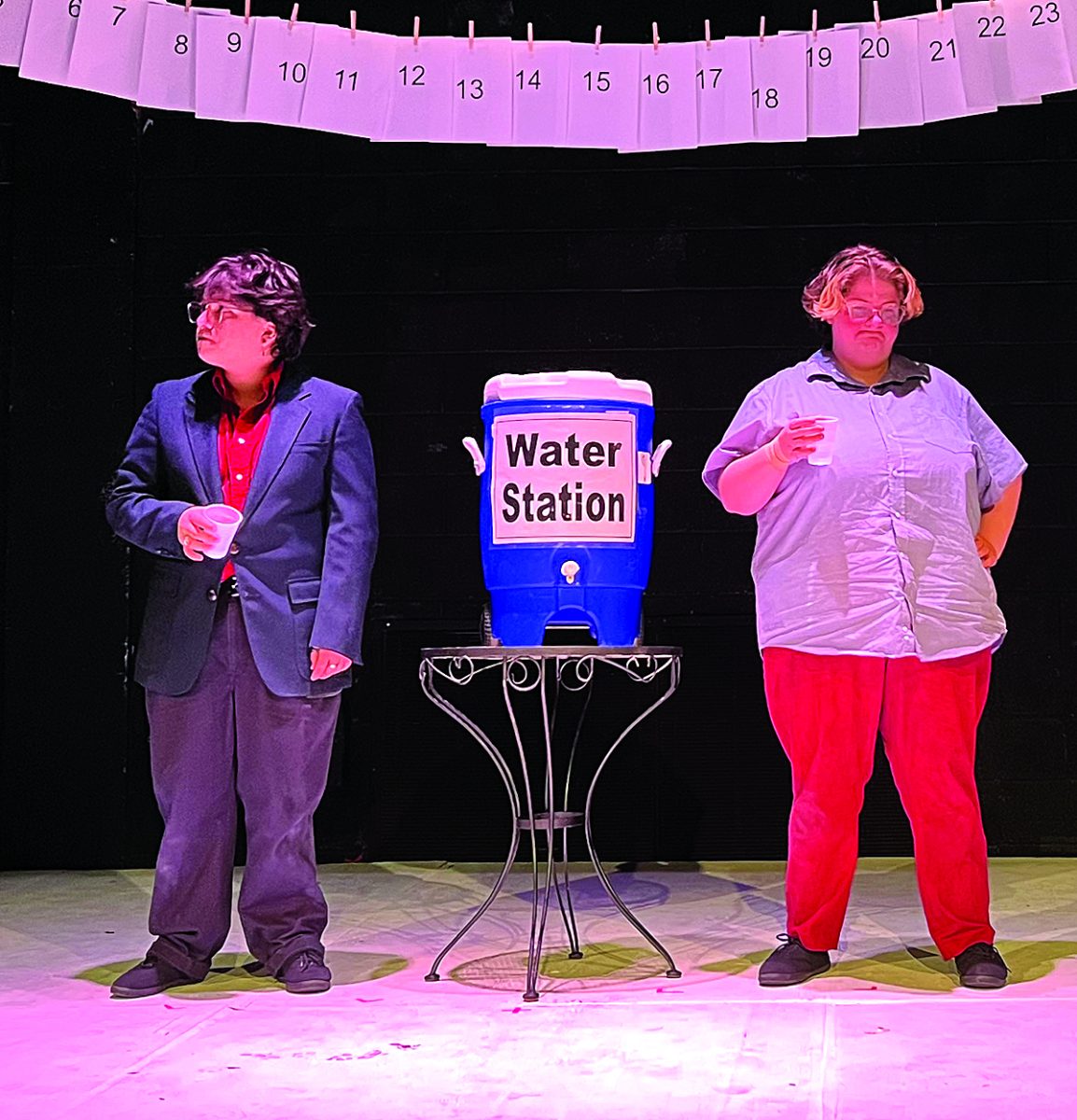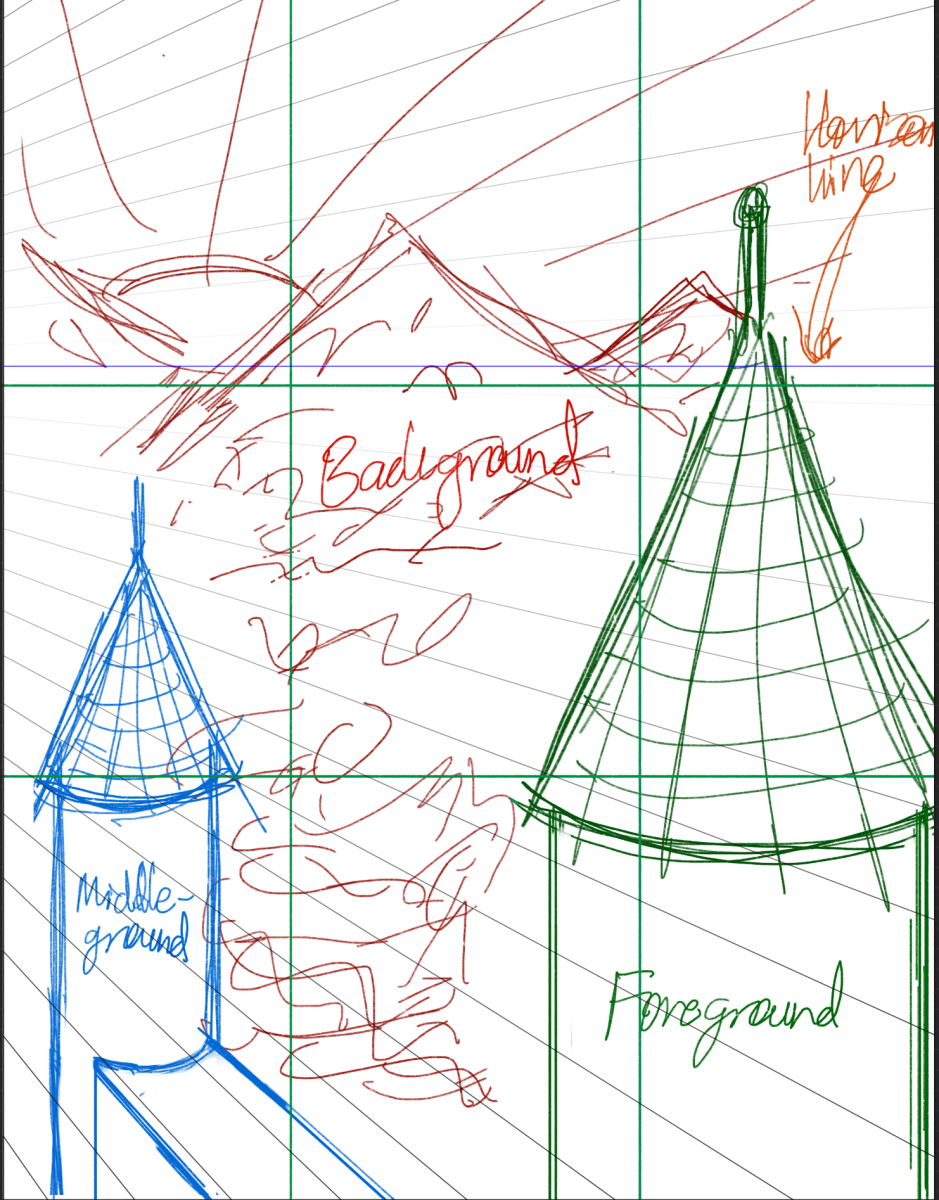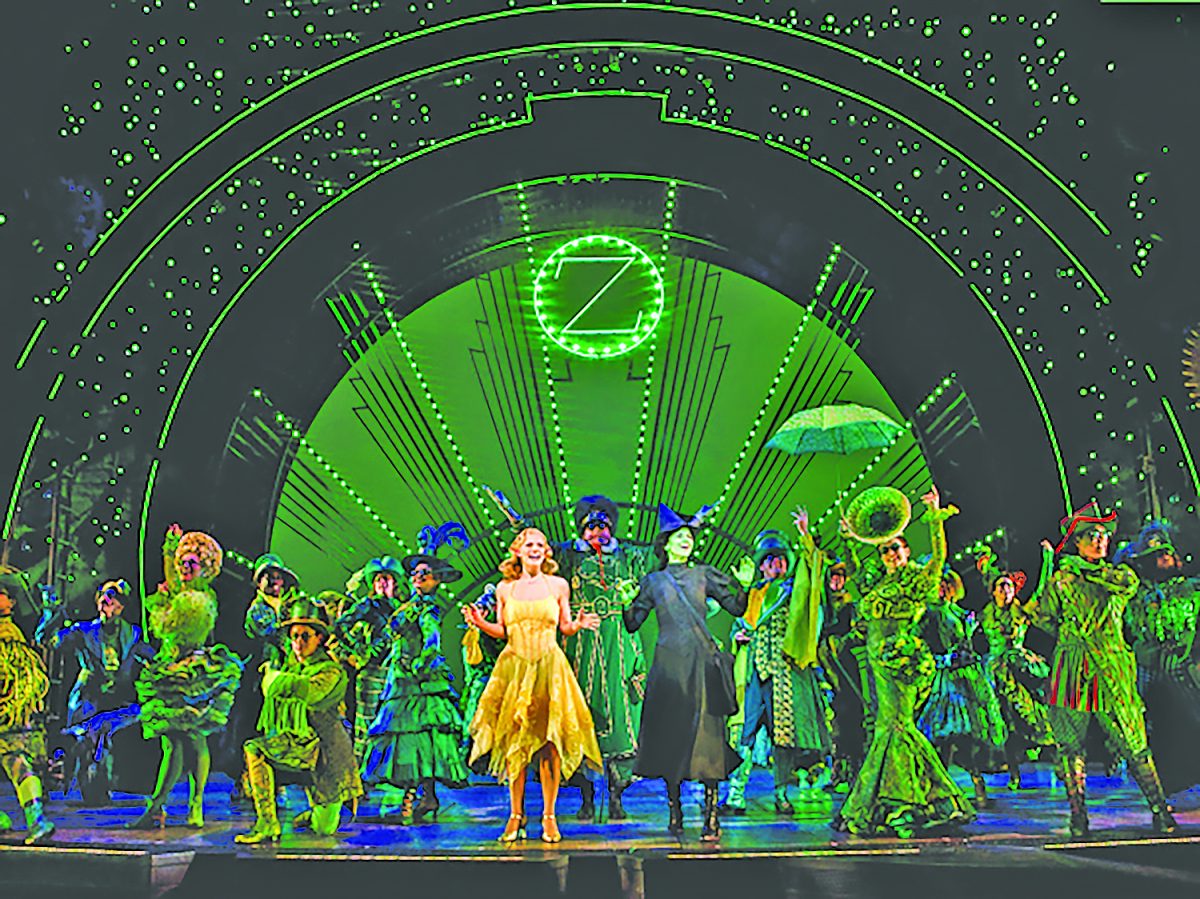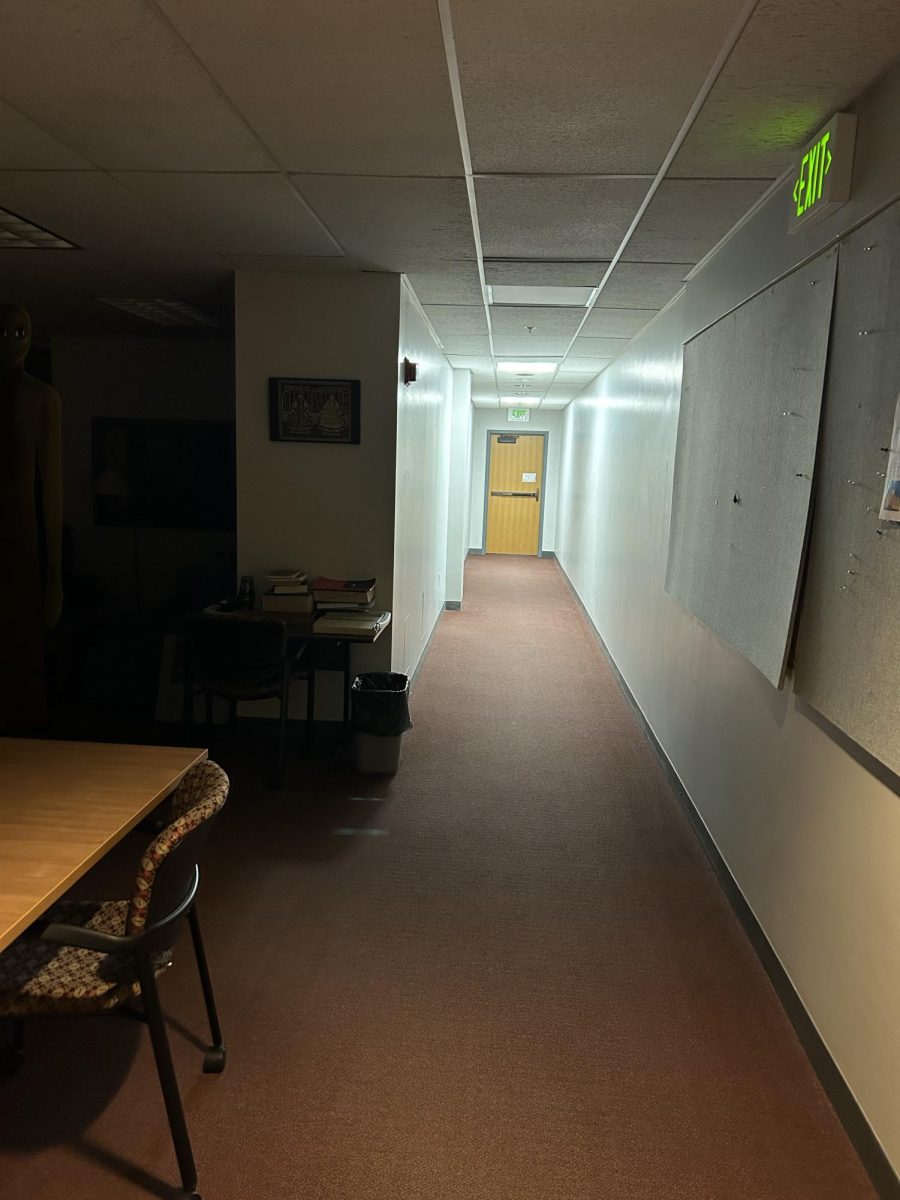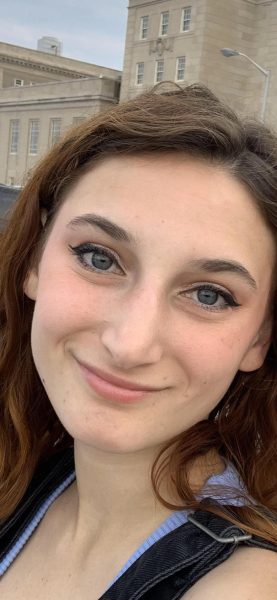Coming November 9-12 to Dibden Center for the Arts: 30 Neo-Futurist Plays from Too Much Light Makes The Baby Go Blind (30 Plays in 60 minutes).
“Having opened in 1988 and still playing today as the longest-running show in Chicago history, Too Much Light Makes the Baby Go Blind is an ensemble experiment in presenting ‘30 plays in order in 60 minutes.’ Each two-minute play is performed in random order with an interactive audience. An onstage 60-minute timer keeps everyone honest.” – An excerpt from the back of the script, written by the Neo-Futurists.
The Polaris performers have been working diligently to bring you a fun and exciting play with 30 different skits, ranging from comedic takes on classic dramas to outright raunchy and sexual bits. This play is rated for Mature Audiences, so if you plan on bringing family members, keep this information in mind.
This show relies on audience participation. The first two rows of seating will be interacted with during specific skits. For those who wish to refrain from participating, it is recommended that you sit in the third row and back. Regardless of where you sit, members of the audience are greatly encouraged to call out a number when prompted to determine which skit the actors perform next.
When asked their favourite part of the rehearsal process, Wilbur Hayes, a junior majoring in Performing Arts and Technology, answered, “The collaboration and creative input that I feel like we all get to have has been super helpful and fulfilling. The fact that when we were first starting this process, It was never preset in a way where we knew exactly what was happening from the get-go.”
Hayes continued on the topic of collaboration, adding, “The collaboration to create the blocking and the interpretation for most of the scenes was very much up to us in a way that it has not necessarily been for … some of our past productions. It has been a process of: we come up with something, Isaac gives it a yes or a no, and we go off of that. It’s been a way that we can create … something that we find creatively fulfilling, with input, not just from Isaac as the director, but also from our peers.”
What is most important for the audience members to know apart from the mature audience rating?
Hayes said, “This play is not what you’d expect it to be, and also, it’s such a huge thing we ride; it’s a necessity for audience members to interact on varying levels,” they said. “If there was one thing I would truly want the audience to know, it is to be ready to yell and be ready to participate in a way that is comfortable for you. Whether you feel comfortable enough to: interact by yelling out numbers for us to pick from, be pulled up on stage, or be interacted [with] as a base for the skits that we are doing. There are levels of participation for everyone. And we cannot create and share this show if people are not ready to help us.”
When asked to elaborate, Hayes said, “Our enthusiasm and our love for this show can only go so far if the audience is not willing to help us determine the course of the show.”
Hayes said the audience participation brings new challenges for the actors.
“As an actor and as a performer in this show, the collaboration is incredibly difficult. … It is so different than anything we’ve ever done before. It’s new territory for all of us. Sometimes, we will get feedback that’s not necessarily helpful, or we will want to do something that ends up not being what we were hoping for in the first place.”
“Another thing that’s been super challenging is addressing all of the ‘what ifs’ because of the fact that it’s so dependent on the audience and what they do. We have to bring up almost every single ‘what if’ possibility and have somewhat of an answer for every single question, which is incredibly time-consuming and also very tiring, but I know that having preparations for each ‘what if’ will allow for a much smoother show.”
Hayes is also in charge of gathering and handling props for the show, which they expressed is also very challenging.
“The workload has been so much heavier than I’ve dealt with before. … [The show] is so fast-paced and so quick-moving, there are so many moving pieces and so many tiny intricate details that need to be there, otherwise, it will not run in the way that is intended. … Organising all of that… while also juggling performing at the same time is a super complicated task.”
Hayes has a specific vision when choosing props for the play.
“My vision for props is, I can kind of summarise it to two words, deceptively minimalist. The way that the stage is built and the way we are putting the show up, the aesthetics for it, most of it is incredibly minimalist. Hinging on black and white, setting stuff as simple as possible. And although everything is very minimalist, making sure that … all of those pieces stand out in contrast to the way that the stage is going to be set up.”
“The set is very simple, very sleek designs and the show is very much based in chaos, and so [the vision is to] have that element of chaos not only be within the performance itself, but within the pieces and the props that the actors use.”
The show is set up so that the order of skits will never be the same. Every character is different, and there are only a few seconds to get into character. So how does Hayes get into character for each skit?
“The way that I visualize it is that my character is me as the performer, so even though I’m doing all of these different characters and performing all of these different things, the very base level is having this presentation of myself as this professional performer. Which, in a kind of backward way, makes it super easy to just slip into whatever character I’m trying to do.
“There’s always going to be this moment before you step on stage and having this visualisation and this mental image of ‘what am I presenting, what am I putting myself forward as before I step on stage?’ so the getting into character of each different skit is not done while I’m on stage and is not visual to the audience. It is done as I’m getting my costume on backstage. It is done as I’m walking to my first entrance onto the stage. I use the time in the moments before and make an entrance. And so, prioritising the time in between each skit is where all of that character work comes in.
“Because we have such a limited amount of time in between doing each skit and we have such a limited amount of time to be able to mentally prepare ourselves to slip into each character, the act of getting into character is less about getting into character beforehand. It’s less about knowing exactly what your character is going to act like and mentally prepping yourself to stay in that and whatever. It is about finding a base, stepping out on stage and then committing to whatever that base ends up being for that day.”
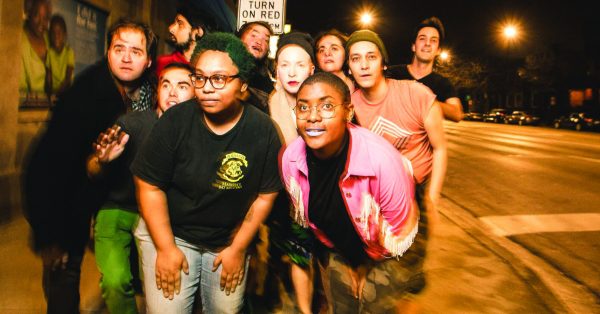
Come out and support your friends! If you don’t have friends in the show come support me, the author of this piece, and some of the other Basement Medicine staff. Also, there may be a surprise in store for audience members if the seats are sold out. Polaris worked hard to bring you a fun experience that you’re sure to remember forever. Tickets are on sale now at www.catamountarts.org. The show is free for the Vermont State University community and ten dollars for general admission.


